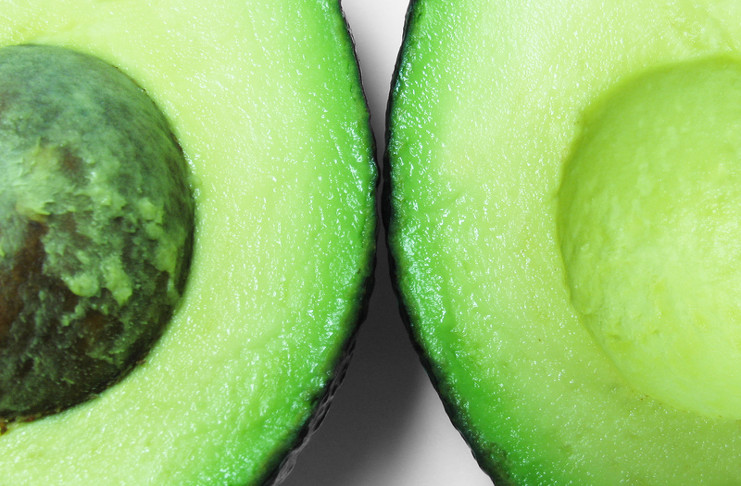An apple a day may keep the doctor away, but it’s far from the healthiest fruit on the planet. In fact, the only reason apples have so much popularity around the world is because they’re so easy to grow. They’re plentiful and can be stored for long periods of time without freezing or dehydration.
Don’t worry though, you’ll find apples further down this list. A few of these “fruits” will actually surprise you. You’ll learn about least a few you’ve likely passed a hundred times in the produce isle, never knowing how healthy they are for you.
Here is a list of, arguably, the 15 healthiest fruits on the planet:
1. Lemons
Lemons are so versatile in how they can be added to your diet that it’s silly not to buy a bunch and enjoy their health benefits. A single small 58 gram lemon has over 50% the RDA for vitamin C, with only 3 grams net carbohydrates. The vitamin C in lemon is very bio-available, but this citrus fruit has much more to offer in the form of its main health-boosters, limonin and lemonine.
Limonin is found in the flesh and juice of the fruit. It has far-reaching benefits as a long-lasting antifungal, antibacterial, and antioxidant. Studies on animals have shown it reduces cholesterol (circulatory health), inhibits cancer cell growth, and can even halt the growth of HIV cells. Drinking the juice of a freshly squeezed lemon is the perfect way to start each day off right.
Lemon peels contain heaping doses of lemonine, which is a potent antioxidant and anti-inflammatory terpene compound that improves health inside the body and outside on the skin. Shred lemon peels finely and add them to salads, or steep them in water to make an antioxidant rich tea.
2. Avocado
Avocado is the healthiest fruit on the planet because it’s very high in fiber and healthy fats, low in sugar, and contains heaps of vitamins and minerals that are essential to health. A medium avocado is only 160 calories and contains 16% RDA of vitamin’s C and B6.
This delicious, nutty tasting fruit is also a great source of the potassium and magnesium the heart needs for healthy function, including maintaining a steady rhythm and keeping blood pressure low. Last, the healthy fats and fiber in avocado make it a very filling food, making it a great healthy snack to have in between meals.
3. Grapefruit
Grapefruit is rarely mentioned when it comes to superfruits, but it should be! Studies show grapefruit can aid in weight loss, balance cholesterol, reduce insulin levels, reverse metabolic syndrome, and prevent kidney stones. It’s a Hollywood favorite, with many in Tinsel Town using it for quick weight loss.
Grapefruit is high in vitamin C, contains loads of the antioxidant lycopene, pectic (which balances cholesterol), potassium, and detoxifying phytonutrients. The insulin-lowering and metabolic-syndrome-reversing benefits are of particular interest, since high insulin and metabolic syndrome are both precursors to full-blown diabetes, and the various complications it’s responsible for.
4. Pineapple
Pineapple is one of the best foods you can eat if you’re looking to boost your vitamin C intake. A cup of chopped pineapple pieces boasts over 130% the RDA for this essential vitamin, plus 76% RDA for manganese which is needed for bone maintenance and healthy metabolic function.
Pineapple is also a rich source of bromelain. Bromelain helps humans digest protein, while also reducing inflammation throughout the body. This group of enzymes may also help to reduce and even reverse cancer cell growth when consumed regularly.
5. Wild Cherries
Cherries are not berries, just to be clear. They’re a tart, fleshy fruit with a single seed inside them, making them part of the drupe family. Cherries are similar to berries in that they contain heaps of anthocyanins and carotenoids; ingredients which make up the bulk of this fruit’s antioxidant abilities.
The more tart the cherry, the better it will be at fighting inflammation in the body. Rat based studies have shown that wild tart cherries are very effective at curbing post-exercise inflammation, as well as the inflammation that causes arthritis pain, and pain resulting from episodes of gout. Cherries also contain small amounts of melatonin, making it a great late night snack before bed.
6. Pomegranate
Like the other fruits mentioned in this list, pomegranates are proven to have excellent antioxidant properties. Pomegranate juice is considered much more potent than the fruit, but the sugar in even a small glass make eating the raw fruit a much healthier choice. Pomegranates contain polyphenols and anthocyanins (the compound that gives bright colored fruits their color).
Among the list of benefits, pomegranate has shown promise in reducing inflammation throughout the body, lowering LDL (bad) cholesterol, preventing cancer, and even stopping the onslaught of Alzheimer’s disease. It’s believed pomegranate can also prevent type II diabetes by lowering insulin and keeping inflammation at bay.
7. Berries
I’m going to go against the grain and lump all berries into the same category. It doesn’t matter if we’re talking about blueberries, cranberries, strawberries, blackberries, gogi, bilberries, etcetera. Most all berries have similar antioxidant and nutrient profiles. All berries tend to be high in vitamin’s C and K, manganese, folate, and fiber. They’re also low in sugar when consumed responsibly (read: a handful is plenty!)
The only real exceptions are aroniaberries and elderberries, which blow the competition out of the water on the ORAC measurement scale of a food’s antioxidant capacity. Wild berries of all kinds are best, as commercially-grown fruit varies in quality depending on its growing conditions. Dried berries are much more dense in nutrition and antioxidant ability, but will also contain much more sugar, so read labels carefully.
8. Watermelon
Watermelon shows a lot of promise in preventing, treating and even reversing health problems. It’s high in vitamin C (20% RDA per cup diced), vitamin A (11% per cup diced), and an interesting plant compound called lycopene. Lycopene is found in all red and orange fleshed fruits (note: berries excluded).
Lycopene has been linked to the prevention of heart disease, metabolic disorders, cancer, and inflammatory diseases of all kinds. Regular consumption of watermelon has proved to reduce one’s risk at developing macular degeneration of the eyes, and a variety of digestive disorders like GERD. Best, watermelon is a mildly sweet treat that’s made up of 90% water to keep you hydrated on the hottest of days.
9. Olives
Olives are indeed a fruit (ask any botanist), which is often a shock to people, because of their bitter and salty taste. They’re a member of the drupe family (Eg., avocados) and contain a lot of a fatty acid called oleic acid, which has proven effective at controlling the negative blood markers associated with heart disease.
Olives are a potent anti-inflammatory with far-reaching positive effects in preventing cancer and reducing one’s risk of developing osteoporosis. The phenolic compounds found in green and black olives prevent the loss of bone mass by stopping calcium from leaching out due to age and other factors.
10. Cucumbers
Cucumbers are another water-rich fruit that’s often lumped in with green vegetables by the culinary crowd. They don’t make the top of the list because they’re not high in any single beneficial health-boosting ingredient. However, they do contain a variety of beneficial vitamins, minerals, and plant compounds in smaller doses.
One of the most beneficial ingredients in cucumber is folic acid or “vitamin B9”. This vitamin is essential for proper heart function and helps prevent strokes, cancer, and also can prevent birth defects. Cucumber is also a highly effective topical skin restorative that can help reduce the appearance of wrinkles, and also works to cool and repair burned skin such as from over-exposure to the sun.
11. Tomatoes
I know I said at the start that I’d lump all berries together, but the tomato stands out on its own due to its unique nutrient profile. Tomatoes offer a number of antioxidant compounds including lycopene, beta carotene and chlorogenic acid, along with the anti-inflammatory narigenin. Tomatoes offer a number of benefits to the body.
Combined with healthy doses of vitamin C (28% RDA per medium fruit), vitamin K1, potassium and folate; the antioxidants and anti-inflammatory compounds in tomato help to control blood pressure, lower the risk of cardiovascular disease, prevent excessive bleeding when injured, and ensure proper cell and tissue growth.
12. Apples
As mentioned in the opening, apples are far from the healthiest fruit you can eat, mainly because of their high sugar content (20 grams net from a medium fruit). However, they do offer moderate nutritional benefit in the form of vitamin C (15% RDA per medium fruit). They also contain lots of the soluble plant fiber, pectin.
A medium apple contains 4.4 grams (17% RDA) of soluble and insoluble fiber. Soluble fiber helps to feed the essential healthy bacteria in our gut microbiome. Insoluble fiber helps our stools to bulk, promoting healthy bowel movements. Pectin fiber also helps to lower cholesterol, speed up weight loss, and control the release of blood sugar into our body by slowing the digestion of carbohydrates.
13. Bananas
Bananas are a great source of essential potassium (12% RDA per medium fruit), magnesium, manganese, vitamin’s C (17% RDA per medium fruit) and B6, folate, and fiber. Bananas are great as a healthy fuel source prior to exercise, and their texture and water content make them very filling, too.
A medium banana fruit contains 27 grams of sugar and 3 grams of fiber, but there’s an interesting way to skirt around the glycemic load if you’re trying to limit sugars in the diet. Buying green bananas and eating them just as they start to ripen/soften delivers mostly resistant carbs that won’t impact blood sugar as much as fully ripened bananas.
14. Purple & Red Grapes
Grapes contain very little of the essential vitamins and minerals we need to survive. With that said, they’re extremely good for you. Grapes contain several key phytonutrients including anthocyanins that help to curb inflammation and ease pain throughout the body and brain, and resveratrol; a phytoestrogen.
Resveratrol helps promote gene expression, balance hormones in women, prevent heart disease and cancer, protect against heart disease and cognitive decline, and is also a potent antioxidant that protects against free radical damage. Resveratrol is only present in the skin of red and purple grapes. Avoid white grapes and don’t peel the skin!
15. Kiwi
Kiwi is a delicious green-fleshed fruit that offers over 100% RDA of vitamin C per fruit. It’s also loaded with soluble fiber (3 grams per fruit) and plenty of phytonutrients proven to protect the body against aging and prevent many types of cancer. Kiwi also contains vitamin K to improve bone health and blood clotting, and vitamin E; a powerful antioxidant.
The polyphenols found in kiwi have shown in lab studies to promote a healthy immune system response. A Medline study showed the antioxidants found in gold kiwi were more effective at preventing oxidative damage than all citrus fruits including grapefruit, oranges, lemons and limes. Kiwi also goes well with protein-rich meals, as it contains plant compounds that help digest amino acids.
Final Thoughts
There are many more healthy fruits out there that can lead to a longer, healthier life when consumed regularly. Keep in mind that consuming too much of any fruit leads to a point of diminishing returns as all fruits other than avocados contain sugar.
Excessive sugar intake can lead to pre-diabetes, diabetes, and other metabolic diseases. Make sure to eat fruits responsibly and don’t exceed your daily caloric needs.





I agree to your list. These are indeed wonder fruits